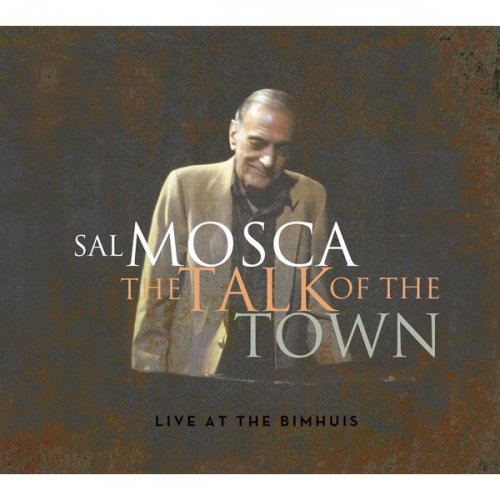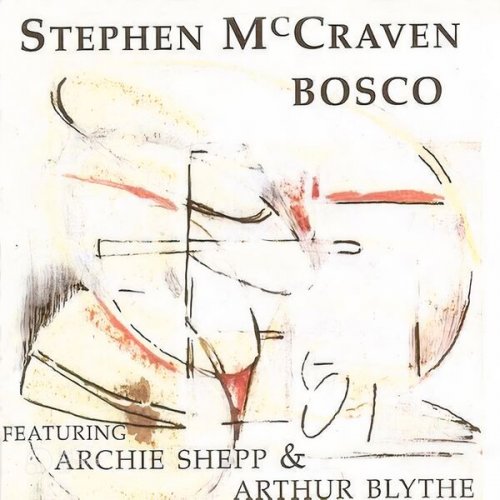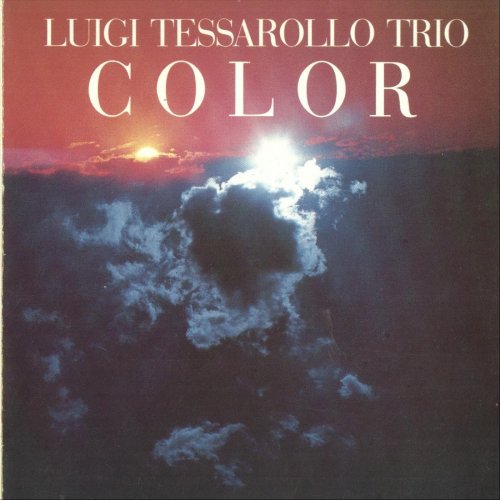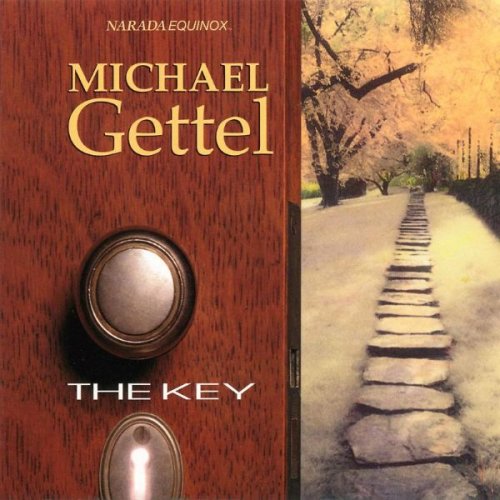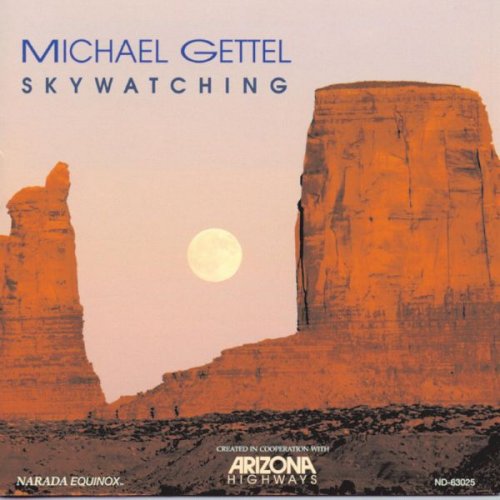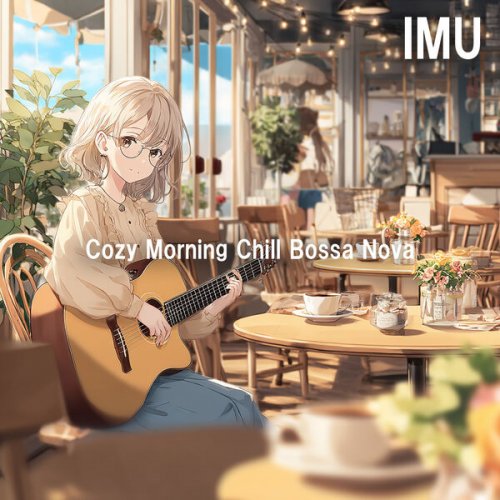Judy Garland - The Man That Got Away (Live) (2024)
- 17 Nov, 13:03
- change text size:
Facebook
Twitter
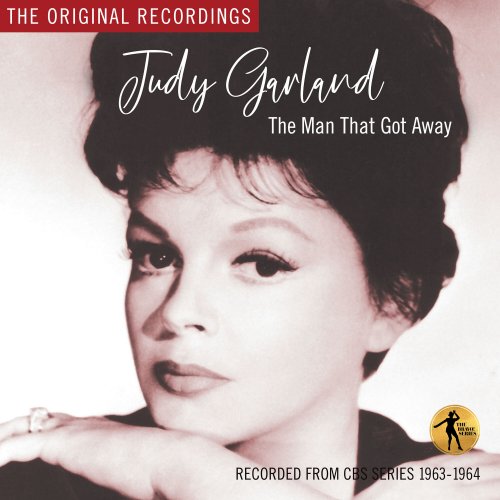
Artist: Judy Garland
Title: The Man That Got Away (Live)
Year Of Release: 2024
Label: BFD
Genre: Pop, Jazz
Quality: FLAC (tracks)
Total Time: 29:04
Total Size: 158 MB
WebSite: Album Preview
Tracklist:Title: The Man That Got Away (Live)
Year Of Release: 2024
Label: BFD
Genre: Pop, Jazz
Quality: FLAC (tracks)
Total Time: 29:04
Total Size: 158 MB
WebSite: Album Preview
1. That's Entertainment (Live) (02:28)
2. You Go To My Head (Live) (03:21)
3. Puttin' On The Ritz (Live) (01:54)
4. Carolina In The Morning (Live) (03:05)
5. That's All (Live) (03:03)
6. Who Cares (Live) (01:15)
7. Ol' Man River (Live) (03:11)
8. When Your Lover Has Gone (Live) (03:12)
9. San Francisco (Live) (03:19)
10. The Man That Got Away (Live) (04:13)
Singer/actress Judy Garland had a varied career that began in vaudeville and extended into movies, records, radio, television, and personal appearances. She is best remembered as the big-voiced star of a series of movie musicals, particularly The Wizard of Oz, in which she sang her signature song, "Over the Rainbow." But unlike most other film stars of her era, she also maintained a career as a recording artist, and after her movie-making days were largely over, she was able to transfer her stardom to performing and recording, culminating in her Grammy-winning number one album Judy at Carnegie Hall.
The third daughter of former vaudevillians running a theater in Grand Rapids, MN, Garland made her stage debut singing "Jingle Bells" during the holiday season when she was two years old. Soon after, she joined the singing group formed by her two sisters. Early on, her surprisingly mature voice caused her to dominate the group. Her family moved to California in the fall of 1926, where the sisters found occasional work on-stage and on radio, even appearing in several film shorts in 1929 and 1930. In the summer of 1934, they toured in the Midwest, where George Jessel suggested they change their name from the Gumm Sisters to the Garland Sisters; eventually, each sister also picked a new first name, with Garland choosing hers for the Hoagy Carmichael/Sammy Lerner song "Judy."
The third daughter of former vaudevillians running a theater in Grand Rapids, MN, Garland made her stage debut singing "Jingle Bells" during the holiday season when she was two years old. Soon after, she joined the singing group formed by her two sisters. Early on, her surprisingly mature voice caused her to dominate the group. Her family moved to California in the fall of 1926, where the sisters found occasional work on-stage and on radio, even appearing in several film shorts in 1929 and 1930. In the summer of 1934, they toured in the Midwest, where George Jessel suggested they change their name from the Gumm Sisters to the Garland Sisters; eventually, each sister also picked a new first name, with Garland choosing hers for the Hoagy Carmichael/Sammy Lerner song "Judy."
The Garland Sisters broke up in the summer of 1935 upon the marriage of Garland's oldest sister, Mary Jane. Soon after, Garland successfully auditioned for the MGM film studio, and she was signed to a contract that fall. Within weeks, she made her network radio debut on The Shell Chateau Hour. The movie studio did not have immediate plans for her, but her career did advance in another area. She had made test recordings on two occasions in 1935 for Decca Records; finally, in June 1936 the label recorded her singing "Stompin' at the Savoy" and released it the following month as her debut single, although she was not yet signed to a term contract with the label.
Garland made her feature film debut in the musical Pigskin Parade, on loan to the 20th Century Fox studio, in November 1936. She finally made an impression at MGM when she sang a version of "You Made Me Love You" with special material written by Roger Edens that transformed it into a tribute to film star Clark Gable, at Gable's birthday party on February 1, 1937. The performance was re-created in Broadway Melody of 1938, released in August. After attending a preview, Decca president Jack Kapp finally decided to sign Garland to a recording contract, and the label soon released her studio versions of "Everybody Sing" and "Dear Mr. Gable: You Made Me Love You" from the film.
Garland made four more films (Thoroughbreds Don't Cry, Everybody Sing, Listen, Darling, and Love Finds Andy Hardy) and a couple more singles through 1938, but she didn't achieve major stardom until the release of The Wizard of Oz in August 1939. Glenn Miller had jumped the gun on the film by recording "Over the Rainbow," and the song was already a hit before the movie was released. But Garland's recording for Decca also became popular, and her success was sealed by the release of Babes in Arms shortly after The Wizard of Oz. At the 1939 Academy Awards in February 1940, she was presented with a miniature Oscar for her outstanding performance as a screen juvenile. In March, Decca released her first album, Judy Garland Souvenir Album, a three-disc, six-song set combining the "Dear Mr. Gable: You Made Me Love You" single with her current singles "In Between" (from Love Finds Andy Hardy) and "Figaro" (from Babes in Arms).
Garland appeared in three films in 1940, Andy Hardy Meets Debutante, Strike Up the Band, and Little Nellie Kelly, and she scored a Top Ten hit with her recording of "I'm Nobody's Baby," featured in the first of them. Her December recording session for songs from Little Nellie Kelly was conducted by David Rose, whom she married on July 28, 1941. She appeared in another three movies that year, Ziegfeld Girl, Life Begins for Andy Hardy, and Babes on Broadway. Her only film released in 1942 was For Me and My Gal, also starring Gene Kelly, who paired with her on a recording of the title song that became a Top Ten hit. In 1943, she starred in Presenting Lily Mars and Girl Crazy, and made a guest appearance in Thousands Cheer. She also made her concert debut during the year, appearing on July 1 with the Philadelphia Orchestra under André Kostelanetz at an open-air performance at the Robin Hood Dell in Philadelphia reported to have attracted 30,000 listeners, and toured service camps in support of the war effort.
Garland's film work became less frequent after 1943, tending to average a single major release each year. Meet Me in St. Louis, her next movie, was released in December 1944, directed by Vincente Minnelli, whom she married on June 15, 1945, just after her divorce from David Rose. Her recording of "The Trolley Song" from the score became a Top Ten hit, as did her album of songs from the film. She followed with another Minnelli-directed film, The Clock, in May 1945, her first non-singing dramatic role. In June, she joined Bing Crosby on a recording of the novelty "Yah-Ta-Ta Yah-Ta-Ta (Talk, Talk, Talk)," her first Top Ten hit with a song not featured in one of her films. Lyricist Johnny Mercer got the jump on all competitors in scoring a hit with his song "On the Atchison, Topeka and the Santa Fe" (written with composer Harry Warren) from Garland's upcoming film, The Harvey Girls, taking it to number one in July. But Garland's version, released in September, was also a Top Ten hit. The film appeared in January 1946.
Garland gave birth to a daughter, Liza Minnelli, on March 12, 1946, and cut back on her work schedule, though she made guest appearances in two other 1946 films, Ziegfeld Follies and Till the Clouds Roll By. The latter, a biography of Jerome Kern, marked the birth of MGM Records and with it the soundtrack album, its aural equivalent reaching the Top Ten. Although Garland remained nominally signed to Decca, the rest of her record releases through 1950 were MGM soundtrack recordings.
Garland returned to filmmaking full-time with The Pirate, released in June 1948, followed quickly by Easter Parade, co-starring Fred Astaire, in July, and then by a guest appearance in Words and Music in December. The last, a biography of Richard Rodgers and Lorenz Hart, produced a number one soundtrack album. At this point, Garland's relationship with MGM began to unravel. Decades of diet pills to control her weight, amphetamines to give her energy, and barbiturates to help her sleep -- reportedly given to her by her mother early on and later by the studio -- had resulted in addiction and emotional instability inconsistent with the grueling demands of making lavish movie musicals. At the same time, the studio, losing audiences to television and facing a severing of its relationship with the Loews' theater chain, was more dependent on big-budget films and more constrained financially. Cast in a second Fred Astaire film, The Barkleys of Broadway, Garland was fired from the production and suspended by the studio for her erratic behavior. She was then reinstated and made In the Good Old Summertime, released in the summer of 1949. By then, she had been fired from Annie Get Your Gun and suspended a second time. She was again reinstated and made Summer Stock, which was released in the summer of 1950 and produced a Top Ten soundtrack album. But when she was fired from Royal Wedding and suspended a third time, on July 17, 1950, she made a halfhearted suicide attempt that got into the papers and substantially changed her image from the ingenuous child of The Wizard of Oz to a tragic Hollywood casualty. In September, MGM formally canceled her contract. She divorced Minnelli on March 22, 1951.
Garland turned from the movies to the concert stage, accepting an offer from the London Palladium to appear for four weeks starting on April 9, 1951. It was the beginning of a major comeback. Returning to the U.S., she re-opened the Palace Theatre in New York as a live venue for what was scheduled to be a four-week engagement on October 16, 1951; it stretched to 19 weeks, finally ending on February 24, 1952, at a reported gross of $750,000. As a result, she was given a special Tony Award "for an important contribution to the revival of vaudeville." On June 2, 1952, she married her manager, Sid Luft. She gave birth to Lorna Luft on November 21, 1952.
Garland and Luft formed a production company and signed with Warner Bros. Pictures to produce a remake of A Star Is Born. It opened in October 1954, resulting in an Academy Award nomination for Garland. The soundtrack album, released by Columbia Records, was a Top Ten hit. Garland gave birth to a son, Joey Luft, on March 29, 1955. She toured the West Coast in July, and in September starred in a live, 90-minute television special tied in to her debut Capitol Records album, Miss Show Business, which reached the Top Ten. The show brought her an Emmy nomination for Best Female Singer. There was another 30-minute TV special in April 1956, a four-week engagement at a Las Vegas hotel in July and August, and a two-month return to the Palace in September, during which Capitol released the chart LP Judy. She did another three weeks in Las Vegas in May 1957 and that month released her third Capitol LP, Alone, which again was a chart item. She toured the U.S. through October, then spent a month at the Dominion Theatre in London. She continued to perform all over the U.S. in 1958 and 1959, and to record for Capitol (Judy in Love and the concert album Judy Garland at the Grove in 1958, The Letter in 1959). In November 1959, she was hospitalized for hepatitis and advised to give up performing, but she returned to action with a performance at the London Palladium in August 1960, followed by more European dates through December and a new Capitol album, Judy! That's Entertainment!, in October. She had a cameo in the film Pepe, released in December. There were more European shows in January and February 1961. Then, on April 23, 1961, she appeared at Carnegie Hall in New York, and the show was recorded for a double-LP set. Judy at Carnegie Hall was number one by September and a gold record within a year; it won Grammy Awards for Album of the Year and Best Solo Vocal Performance, Female.
In December 1961, she returned to films with a dramatic role in Judgment at Nuremberg that earned her an Academy Award nomination for Best Supporting Actress. She starred in her first television special in six years in February 1962, earning Emmy nominations for Program of the Year and Outstanding Program Achievement in the Field of Variety. Her next album, The Garland Touch, released in July, reached the Top 20. In September, she returned to performing in Las Vegas, spending six weeks at the Sahara, with additional dates through February 1963. November saw the release of Gay Purr-ee, an animated musical film for which she provided one of the character voices. In January 1963, she starred in the dramatic film A Child Is Waiting. There was another television special in March that brought an Emmy nomination for Outstanding Program Achievement in the Field of Music. Its success led CBS to offer her her own weekly variety series. In May, she portrayed a troubled singing star in I Could Go on Singing, her final film appearance. The soundtrack album reached the Top 40.
The Judy Garland Show premiered on Sunday, September 29, 1963, programmed directly opposite NBC's Western drama Bonanza, the second-highest rated show on television. As such, it never had a chance to become a success, but it ran for 26 weeks, through March 30, 1964, and earned an Emmy nomination for Outstanding Performance in a Variety or Musical Program or Series. Capitol released Just for Openers, an album of performances drawn from the series, on the day of the final broadcast.
In May 1964, Garland undertook a tour of the Far East marred by illness. In November, she returned to the London Palladium, performing with her 18-year-old daughter, Liza Minnelli. The performance was filmed and recorded. A special was broadcast on British television in December, and a double album, "Live" at the London Palladium, was released on Capitol in August 1965, spending several months in the charts. Garland toured the U.S. during 1965. She married actor Mark Herron on November 14, 1965, just after her divorce from Sid Luft became final. (She divorced Herron on April 11, 1967.) She was less active in 1966, restricting herself to a few live and television appearances. But she worked extensively in 1967, including a month-long return to the Palace that summer which produced a new live album on a new label, Judy Garland at Home at the Palace -- Opening Night, in the charts for ABC Records in September. There were a handful of dates in the U.S. in 1968, the last of them being a performance on July 20 at JFK Stadium in Philadelphia. On December 30, she opened a five-week engagement at the Talk of the Town nightclub in London. She married her fifth husband, nightclub manager Mickey Deans, on March 15, 1969. In March, she embarked on a trio of Scandinavian dates, the last of which was at the Falkoner Center in Copenhagen on March 25. Three months later, she died of an accidental overdose of barbiturates.
In the decades following her death, Judy Garland's troubled personal life, which contrasted so starkly with the exuberance and innocence of her film roles, has been the grist for numerous books and other accounts, to the point that her career is sometimes viewed more as an object lesson in Hollywood excess than as the remarkable string of multimedia accomplishments it was. But even the salacious and exploitative material is dependent on her star power and vocal pyrotechnics to have any appeal. Garland herself, who was so attracted to the backstage Hollywood story of A Star Is Born, performing it both on radio and later on film, certainly understood the attraction of a tragic image and may have used it deliberately. Nevertheless, the core of her significance as an artist remains her amazing voice and emotional commitment to her songs.
Garland's extensive work as a singer, including her appearances in films and on radio and television, in addition to live performances and studio recordings, makes her discography lengthy and chaotic. In the '90s, her soundtrack recordings saw reissue through Rhino Records, while MCA undertook a box set of her '30s and '40s Decca studio recordings (The Complete Decca Masters [Plus]) and Capitol compiled its own box of her '50s and '60s material, (The One & Only). Beyond these lies a vast and ever-increasing sea of quasi-legal releases that consumers should approach with caution.
Biography by William Ruhlmann
Garland made her feature film debut in the musical Pigskin Parade, on loan to the 20th Century Fox studio, in November 1936. She finally made an impression at MGM when she sang a version of "You Made Me Love You" with special material written by Roger Edens that transformed it into a tribute to film star Clark Gable, at Gable's birthday party on February 1, 1937. The performance was re-created in Broadway Melody of 1938, released in August. After attending a preview, Decca president Jack Kapp finally decided to sign Garland to a recording contract, and the label soon released her studio versions of "Everybody Sing" and "Dear Mr. Gable: You Made Me Love You" from the film.
Garland made four more films (Thoroughbreds Don't Cry, Everybody Sing, Listen, Darling, and Love Finds Andy Hardy) and a couple more singles through 1938, but she didn't achieve major stardom until the release of The Wizard of Oz in August 1939. Glenn Miller had jumped the gun on the film by recording "Over the Rainbow," and the song was already a hit before the movie was released. But Garland's recording for Decca also became popular, and her success was sealed by the release of Babes in Arms shortly after The Wizard of Oz. At the 1939 Academy Awards in February 1940, she was presented with a miniature Oscar for her outstanding performance as a screen juvenile. In March, Decca released her first album, Judy Garland Souvenir Album, a three-disc, six-song set combining the "Dear Mr. Gable: You Made Me Love You" single with her current singles "In Between" (from Love Finds Andy Hardy) and "Figaro" (from Babes in Arms).
Garland appeared in three films in 1940, Andy Hardy Meets Debutante, Strike Up the Band, and Little Nellie Kelly, and she scored a Top Ten hit with her recording of "I'm Nobody's Baby," featured in the first of them. Her December recording session for songs from Little Nellie Kelly was conducted by David Rose, whom she married on July 28, 1941. She appeared in another three movies that year, Ziegfeld Girl, Life Begins for Andy Hardy, and Babes on Broadway. Her only film released in 1942 was For Me and My Gal, also starring Gene Kelly, who paired with her on a recording of the title song that became a Top Ten hit. In 1943, she starred in Presenting Lily Mars and Girl Crazy, and made a guest appearance in Thousands Cheer. She also made her concert debut during the year, appearing on July 1 with the Philadelphia Orchestra under André Kostelanetz at an open-air performance at the Robin Hood Dell in Philadelphia reported to have attracted 30,000 listeners, and toured service camps in support of the war effort.
Garland's film work became less frequent after 1943, tending to average a single major release each year. Meet Me in St. Louis, her next movie, was released in December 1944, directed by Vincente Minnelli, whom she married on June 15, 1945, just after her divorce from David Rose. Her recording of "The Trolley Song" from the score became a Top Ten hit, as did her album of songs from the film. She followed with another Minnelli-directed film, The Clock, in May 1945, her first non-singing dramatic role. In June, she joined Bing Crosby on a recording of the novelty "Yah-Ta-Ta Yah-Ta-Ta (Talk, Talk, Talk)," her first Top Ten hit with a song not featured in one of her films. Lyricist Johnny Mercer got the jump on all competitors in scoring a hit with his song "On the Atchison, Topeka and the Santa Fe" (written with composer Harry Warren) from Garland's upcoming film, The Harvey Girls, taking it to number one in July. But Garland's version, released in September, was also a Top Ten hit. The film appeared in January 1946.
Garland gave birth to a daughter, Liza Minnelli, on March 12, 1946, and cut back on her work schedule, though she made guest appearances in two other 1946 films, Ziegfeld Follies and Till the Clouds Roll By. The latter, a biography of Jerome Kern, marked the birth of MGM Records and with it the soundtrack album, its aural equivalent reaching the Top Ten. Although Garland remained nominally signed to Decca, the rest of her record releases through 1950 were MGM soundtrack recordings.
Garland returned to filmmaking full-time with The Pirate, released in June 1948, followed quickly by Easter Parade, co-starring Fred Astaire, in July, and then by a guest appearance in Words and Music in December. The last, a biography of Richard Rodgers and Lorenz Hart, produced a number one soundtrack album. At this point, Garland's relationship with MGM began to unravel. Decades of diet pills to control her weight, amphetamines to give her energy, and barbiturates to help her sleep -- reportedly given to her by her mother early on and later by the studio -- had resulted in addiction and emotional instability inconsistent with the grueling demands of making lavish movie musicals. At the same time, the studio, losing audiences to television and facing a severing of its relationship with the Loews' theater chain, was more dependent on big-budget films and more constrained financially. Cast in a second Fred Astaire film, The Barkleys of Broadway, Garland was fired from the production and suspended by the studio for her erratic behavior. She was then reinstated and made In the Good Old Summertime, released in the summer of 1949. By then, she had been fired from Annie Get Your Gun and suspended a second time. She was again reinstated and made Summer Stock, which was released in the summer of 1950 and produced a Top Ten soundtrack album. But when she was fired from Royal Wedding and suspended a third time, on July 17, 1950, she made a halfhearted suicide attempt that got into the papers and substantially changed her image from the ingenuous child of The Wizard of Oz to a tragic Hollywood casualty. In September, MGM formally canceled her contract. She divorced Minnelli on March 22, 1951.
Garland turned from the movies to the concert stage, accepting an offer from the London Palladium to appear for four weeks starting on April 9, 1951. It was the beginning of a major comeback. Returning to the U.S., she re-opened the Palace Theatre in New York as a live venue for what was scheduled to be a four-week engagement on October 16, 1951; it stretched to 19 weeks, finally ending on February 24, 1952, at a reported gross of $750,000. As a result, she was given a special Tony Award "for an important contribution to the revival of vaudeville." On June 2, 1952, she married her manager, Sid Luft. She gave birth to Lorna Luft on November 21, 1952.
Garland and Luft formed a production company and signed with Warner Bros. Pictures to produce a remake of A Star Is Born. It opened in October 1954, resulting in an Academy Award nomination for Garland. The soundtrack album, released by Columbia Records, was a Top Ten hit. Garland gave birth to a son, Joey Luft, on March 29, 1955. She toured the West Coast in July, and in September starred in a live, 90-minute television special tied in to her debut Capitol Records album, Miss Show Business, which reached the Top Ten. The show brought her an Emmy nomination for Best Female Singer. There was another 30-minute TV special in April 1956, a four-week engagement at a Las Vegas hotel in July and August, and a two-month return to the Palace in September, during which Capitol released the chart LP Judy. She did another three weeks in Las Vegas in May 1957 and that month released her third Capitol LP, Alone, which again was a chart item. She toured the U.S. through October, then spent a month at the Dominion Theatre in London. She continued to perform all over the U.S. in 1958 and 1959, and to record for Capitol (Judy in Love and the concert album Judy Garland at the Grove in 1958, The Letter in 1959). In November 1959, she was hospitalized for hepatitis and advised to give up performing, but she returned to action with a performance at the London Palladium in August 1960, followed by more European dates through December and a new Capitol album, Judy! That's Entertainment!, in October. She had a cameo in the film Pepe, released in December. There were more European shows in January and February 1961. Then, on April 23, 1961, she appeared at Carnegie Hall in New York, and the show was recorded for a double-LP set. Judy at Carnegie Hall was number one by September and a gold record within a year; it won Grammy Awards for Album of the Year and Best Solo Vocal Performance, Female.
In December 1961, she returned to films with a dramatic role in Judgment at Nuremberg that earned her an Academy Award nomination for Best Supporting Actress. She starred in her first television special in six years in February 1962, earning Emmy nominations for Program of the Year and Outstanding Program Achievement in the Field of Variety. Her next album, The Garland Touch, released in July, reached the Top 20. In September, she returned to performing in Las Vegas, spending six weeks at the Sahara, with additional dates through February 1963. November saw the release of Gay Purr-ee, an animated musical film for which she provided one of the character voices. In January 1963, she starred in the dramatic film A Child Is Waiting. There was another television special in March that brought an Emmy nomination for Outstanding Program Achievement in the Field of Music. Its success led CBS to offer her her own weekly variety series. In May, she portrayed a troubled singing star in I Could Go on Singing, her final film appearance. The soundtrack album reached the Top 40.
The Judy Garland Show premiered on Sunday, September 29, 1963, programmed directly opposite NBC's Western drama Bonanza, the second-highest rated show on television. As such, it never had a chance to become a success, but it ran for 26 weeks, through March 30, 1964, and earned an Emmy nomination for Outstanding Performance in a Variety or Musical Program or Series. Capitol released Just for Openers, an album of performances drawn from the series, on the day of the final broadcast.
In May 1964, Garland undertook a tour of the Far East marred by illness. In November, she returned to the London Palladium, performing with her 18-year-old daughter, Liza Minnelli. The performance was filmed and recorded. A special was broadcast on British television in December, and a double album, "Live" at the London Palladium, was released on Capitol in August 1965, spending several months in the charts. Garland toured the U.S. during 1965. She married actor Mark Herron on November 14, 1965, just after her divorce from Sid Luft became final. (She divorced Herron on April 11, 1967.) She was less active in 1966, restricting herself to a few live and television appearances. But she worked extensively in 1967, including a month-long return to the Palace that summer which produced a new live album on a new label, Judy Garland at Home at the Palace -- Opening Night, in the charts for ABC Records in September. There were a handful of dates in the U.S. in 1968, the last of them being a performance on July 20 at JFK Stadium in Philadelphia. On December 30, she opened a five-week engagement at the Talk of the Town nightclub in London. She married her fifth husband, nightclub manager Mickey Deans, on March 15, 1969. In March, she embarked on a trio of Scandinavian dates, the last of which was at the Falkoner Center in Copenhagen on March 25. Three months later, she died of an accidental overdose of barbiturates.
In the decades following her death, Judy Garland's troubled personal life, which contrasted so starkly with the exuberance and innocence of her film roles, has been the grist for numerous books and other accounts, to the point that her career is sometimes viewed more as an object lesson in Hollywood excess than as the remarkable string of multimedia accomplishments it was. But even the salacious and exploitative material is dependent on her star power and vocal pyrotechnics to have any appeal. Garland herself, who was so attracted to the backstage Hollywood story of A Star Is Born, performing it both on radio and later on film, certainly understood the attraction of a tragic image and may have used it deliberately. Nevertheless, the core of her significance as an artist remains her amazing voice and emotional commitment to her songs.
Garland's extensive work as a singer, including her appearances in films and on radio and television, in addition to live performances and studio recordings, makes her discography lengthy and chaotic. In the '90s, her soundtrack recordings saw reissue through Rhino Records, while MCA undertook a box set of her '30s and '40s Decca studio recordings (The Complete Decca Masters [Plus]) and Capitol compiled its own box of her '50s and '60s material, (The One & Only). Beyond these lies a vast and ever-increasing sea of quasi-legal releases that consumers should approach with caution.
Biography by William Ruhlmann

